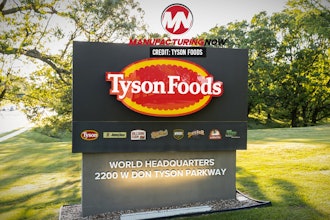It’s no surprise that pests wander around food. And if you’re in the food manufacturing industry you need to be on the lookout for possible pest infestations that can cause astronomical damage to your goods.
Common pests like flies, rodents, beetles, cockroaches, spiders, and birds are often spotted around massive properties. With doors left open and little holes that aren’t sealed, pests can make their way into your facility with ease. It can be difficult to identify these pests unless you spot them. But there a lot of signs that can determine their presence. Commercial pest control can help you identify these signs and help you get rid of these pests to prevent further problems.
Signs of the Presence of Common Pests at Your Facility:
Rodents
- Urine and droppings
- Tracks
- Loose fur
- Stains from body oil
- Packaging and products left with bites
- Loss of fur
- Visual sighting
Birds
- Noises
- Nests
- Droppings
- Visual sighting
Insects
- Pupae or larvae on equipment or food storage boxes
- Damaged food products
- Visual sighting
If you’re battling any of these pests, it’s important to identify their entry points and hiding spots within your facility. But simply identifying them and killing a few won’t be enough. There are certain steps you will have to take to ensure there aren’t any pests in the future. Make sure you are regular with these steps. And it’s important that you train your staff for the same.
Here are 4 Steps for Effective Pest Prevention:
1. Close or seal any entry points
Rats are known to squeeze through holes, while mice can penetrate holes as tiny as a dime. Seal and block any such cracks and holes that may be potential entry points. Try to keep the doors closed at all times unless there’s a delivery or when your staff moves in and out. For added protection, a rodent control professional can help you fix double doors or plastic strip curtains at entrances.
2. Host Regular Training Sessions
You may have recruited an entirely new lot of untrained staff. But you’ll also have a big group of employees that have been working for you over the last five to ten years. The question is, how trained is your staff to handle a pest infestation.
Make sure you are in close communication with your staff members about these pests. Provide them with adequate training and call a pest control expert to help your staff identify pests the correct way.
3. Execute Sanitation Checks
Rodents are some of the easiest to identify. They’re often tempted by food and debris that is left unattended behind the facility. So while you may not find them inside the facility, they are finding it easy to make a mess without you even noticing. But that doesn’t mean they can’t sneak right in, they might just be tempted for a little more. Make sure you clean up spills immediately. And keep all garbage dumpsters at a significant distance from your facility to keep these uninvited guests away.
4. Check Equipment and Machinery Regularly
Rodents will chew on almost anything and everything. That means even your electrical wires and facility’s machinery is at a risk. So do your bit to inspect your facility regularly, every nook and corner possible. Check your equipment for any damage and keep it clean at all times.
Protecting your goods and your staff from these pests is your priority. If you sight pests in your facility, there’s a high possibility that there’s a pest infestation. Get a rodent exterminator to help you check your entire facility in and out. Each facility has a unique set of problems that a professional can solve along with preserving your company’s reputation.
Raymond Web is digital marketing manager for Take Care Termite and Pest Control, in Tracy, California.





















